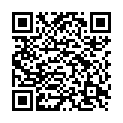|
|
|
| Module code: ABBG47 |
|
|
8V (8 hours per week) |
|
10 |
| Semester: 4 |
| Mandatory course: yes |
Language of instruction:
German |
Assessment:
Exam (minimum of 75% to pass) 60 minutes for General Aircraft Knowledge, 45 minutes for Principles of Flight
[updated 01.10.2020]
|
Exam recurrence:
The information regarding exam recurrence is found within the exam policy of the study programme (ASPO).
|
ABBG47 (P410-0004) Aviation Business (Basic), Bachelor, ASPO 01.10.2015
, semester 3, mandatory course
ABBG47 (P410-0004) Aviation Business (Basic), Bachelor, ASPO 01.10.2018
, semester 4, mandatory course
|
120 class hours (= 90 clock hours) over a 15-week period.
The total student study time is 300 hours (equivalent to 10 ECTS credits).
There are therefore 210 hours available for class preparation and follow-up work and exam preparation.
|
Recommended prerequisites (modules):
ABBG42 General Aircraft Knowledge I & Principles of Flight I
ABBG61 Visual Flight Training I
[updated 11.02.2020]
|
Recommended as prerequisite for:
ABBG15 Airline Maintanance Management
ABBG411 ATPL Test Preparation
[updated 05.11.2021]
|
Module coordinator:
Studienleitung |
Lecturer: Studienleitung
[updated 01.10.2018]
|
Learning outcomes:
General Aircraft Knowledge II (broader term):
General aircraft knowledge is subdivided into the subjects:
- Airframe and systems, electrics, powerplant, emergency equipment
- Instrumentation
After successfully completing this part of the course, students will have comprehensive knowledge about airframe designs and materials used, loads applied to the structure of aeroplane certified in the transport category CS-25. They will be familiar with the properties of large airplane constructions including airplane systems and propulsion systems and the instrumentation. This knowledge will enable them to to recognize coherences between different technical systems of a modern passenger airplane.
Principles of Flight II
After successfully completing this part of the course, students will have acquired knowledge about relationship between the controllability and stability of an airplane. They will have advanced their knowledge about aerodynamic forces. Students will be familiar with the behavior of a multi-engine airplane in asymmetrical thrust conditions. High speed aerodynamics, the effect of airframe contamination and structural limitations will round off this subject.
[updated 01.10.2020]
|
Module content:
General Aircraft Knowledge II
1. Airframe and systems
1.1. Airframe design and materials
1.2. Aircraft construction according to CS 25
1.3. Loads applied to aircraft structures
1.4. Subsidiary airframe structures
1.5. Fuselage, wings, control and stabilizing surfaces
1.6. Landing gear, wheels, tires, brake system
1.7. Primary and secondary flight controls
1.8. Hydraulic system
1.9. Cabin conditioning and pressurization
1.10. Anti-ice, de-ice and rain protection
1.11. Fuel systems
1.12. Fire and smoke protection and detection
1.13. Oxygen systems
2. Electrics
2.1. AC electrics - basic principles
2.2. 3-phase AC generator
2.3. Static electricity
2.4. AC components
2.5. AC distribution system
2.6. Electric motors
2.7. Semiconductors and logic
3. Powerplant
3.1. Gas turbine principles
3.2. Gas turbine design
3.3. Gas turbine air inlet
3.4. Gas turbine compressor
3.5. Gas turbine combustion system
3.6. The turbine system
3.7. Gas turbine exhaust system
3.8. Gas turbine fuel and lubrication system
3.9. Gas turbine control and operation
3.10. The auxiliary power unit
4. Instrumentation
4.1. Inertial navigation system
4.2. Inertial reference system
4.3. The radio altimeter
4.4. Flight management system
4.5. Electronic flight information system
4.6. The head-up display
4.7. Auto flight concepts
4.8. The autopilot
4.9. Auto-throttle system
4.10. Automatic landing system
4.11. Yaw damper
4.12. Flight warning systems _ aerodynamic warnings
4.13. Traffic alert and avoidance system
4.14. Terrain awareness warning system
4.15. Flight data recorder
4.16. Electronic centralized aircraft monitoring
4.17. Engine instrument & crew alerting system
Principles of Flight II
1. Stability and control
2. Longitudinal stability and control
3. Direction and lateral stability
4. Asymmetric flight
5. High speed aerodynamics
6. Airframe contamination
7. Limitations
[updated 01.10.2020]
|
Teaching methods/Media:
Lectures, exercises, calculations/ppt and keynote presentations, white board, flip chart, iTunes U, iPad or MacBook, animations,
[updated 01.10.2020]
|
Recommended or required reading:
- ATPL learning objectives, EASA 2016
- ATPL Aircraft General Knowledge Airframe & Systems, Slate Ltd. 2012
- ATPL Aircraft General Knowledge Electrics, Slate Ltd. 2012
- ATPL Aircraft General Knowledge Engines, Slate Ltd. 2012
- ATPL Aircraft General Knowledge Advanced Instrumentation, Slate Ltd. 2012
- ATPL Principles of Flight, Slate Ltd. 2012
[updated 01.10.2020]
|


